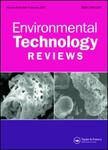版权所有:内蒙古大学图书馆 技术提供:维普资讯• 智图
内蒙古自治区呼和浩特市赛罕区大学西街235号 邮编: 010021

作者机构:R&D Center Toros Agri Industry and Trade Co. Inc Mersin Turkey Business Development and Investors Relations Toros Agri Industry and Trade Co. Inc Istanbul Strategy Turkey
出 版 物:《Environmental Technology Reviews》 (Environ. Technol. Rev.)
年 卷 期:2022年第11卷第1期
页 面:148-155页
核心收录:
学科分类:0830[工学-环境科学与工程(可授工学、理学、农学学位)] 0817[工学-化学工程与技术] 08[工学] 0706[理学-大气科学] 0703[理学-化学]
摘 要:Greenhouse gas emissions, mostly CO2 release, on anthropogenic sources and industrial applications have triggered an increase in global temperature, termed as global warming and as-related climate change. Phosphogypsum (PG) is a by-product of wet process phosphoric acid production, mainly composed of calcium sulfate dihydrate (gypsum) together with some impurities. The annual accumulation rate of PG has reached 300 Mtons, and there is a need for an efficient, continuous, and bulk consumption strategy. Industrial by-products have been used as an alternative raw material for CO2 capture as a solid carbonate compound. PG is rich in calcium, being a promising candidate for CO2 mineral sequestration. In this manner, the Merseburg process (the ammono-carbonation of gypsum) allows both CO2 capture and PG recycling. Products are ammonium sulfate, a well-desired nitrogenous fertilizer and CaCO3, a functional filler material utilized in various kinds of industries. The Merseburg process allows dual environmental benefits by allowing the consumption of an industrial by-product and performing CO2 capture technology, both contributing to sustainable development goals. This study gives a brief summary of the environmental possible impacts of the Merseburg process in terms of CO2 sequestration and phosphogypsum management. © 2022 Informa UK Limited, trading as Taylor & Francis Group.